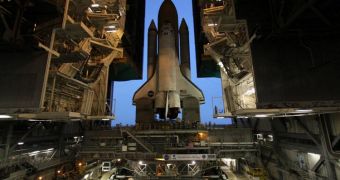With the new authorization bill that Congress passed this week, the American space agency is caught celebrating its October 1 anniversary in the most important transitional period of its history.
The document, which was approved in the evening of September 29, states the new guidelines for space exploration that NASA needs to follow over the coming decades.
The most important conclusion of the bill is that NASA needs to engage in the avenue proposed by US President Barack Obama in the space exploration plan guidelines he set forth for the agency earlier this year.
The main focus of the space program has changed from reaching the Moon by 2020 to reaching a near-Earth object (NEO) by 2025, and sending a manned mission to Mars by the late 2030s.
Moving past the controversies that surrounded this new piece of legislation, the most important thing is that the agency now has a clear objective it needs to pursue in the coming decades.
Today is the 52nd anniversary of the day when NASA first began the impressive objective of sending humans to space, and understanding our Universe in more detail than ever before.
In most aspects, doing so would have been impossible without an organized vision of what needs to be done, and without the valiant efforts of thousands of highly-skilled experts that NASA employs.
“To have the leadership of the Congress take that step is important right now because you have the NASA work force, I think, really looking for the direction for the future,” NASA deputy administrator Lori Garver told Space in a statement this week.
As NASA approaches the end of its nearly-30-year-long Shuttle Program, it is now left with a total of three flight to be conducted. Two were already planned, Discovery in November and Endeavor in February 2011, and another one, by shuttle Atlantis, was approved by the new bill.
With the end of this flagship program, more than 1,400 workers will be fired from the Boeing/Lockheed Martin enterprise that is known as the United Launch Alliance (ULA).
“[NASA] is clearly an agency in transition. Transition is the difficult time, especially for the people who are losing their jobs,” says Leroy Chiao, a former astronaut.
“But I am optimistic that what will emerge is a stronger, more robust program and agency, once the transition is worked through,” says the expert, who participated in the panel that assessed NASA's possible avenues of development last year.
“I think NASA is kind of at a crossroads, and that's obvious. The decisions that are made here – there's a lot riding on this. It's going to govern human spaceflight for the next 25 to 30 years, probably,” concludes Smithsonian's National Air and Space Museum space history curator Roger Launius.

 14 DAY TRIAL //
14 DAY TRIAL //